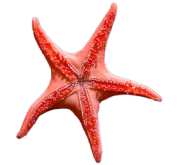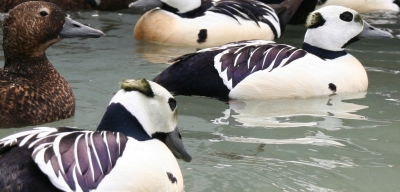Give Thanks for Species Rescued From the Brink of Extinction March 17, 2015
Accredited zoos and aquariums are saving more than 30 endangered species and the Alaska SeaLife Center Plays a Leading Role.
Seward, Alaska (November 17, 2014) – As American families prepare for the annual ritual of giving thanks, they can add to their list of things to be thankful for a rare victory in the battle against global climate change – more than 30 endangered species brought back from the brink of extinction thanks to America’s accredited zoos and aquariums.
With climate change, population growth and deforestation, and poaching threatening species around the world, we are facing what scientists call the “Sixth Extinction.”
But the 229 accredited members of the Association of Zoos and Aquariums have built a unique infrastructure to save endangered species – breeding programs that coordinate across many institutions to ensure genetic diversity, systems so that animals can be safely moved between institutions, and partnerships with local, national, and international conservation organizations working on re-introducing these animals to their native ranges.
Because of that infrastructure, there is good news in the face of the extinction crisis: from the Florida manatee to the California condor, the Hawaiian crow to the Puerto Rican crested toad, the Chinese alligator to the American bison, zoos and aquariums have saved more than 30 species, and are working today on dozens more.
Over the next several months, AZA-accredited zoos and aquariums will be celebrating these successes, and inviting the public to support efforts to save even more species. In November, in honor of Thanksgiving, AZA is spotlighting endangered birds, including:
· All four species of eider sea ducks saw a decline in population from the 1970s to the 1990s, and two of the species are currently listed as threatened in the U.S.: thespectacled eider and the Alaska-breeding population of Steller’s eider. For over thirteen years, the Eider Research Program at the Alaska SeaLife Center has conducted field, laboratory, and captive studies on Steller’s and spectacled eiders in Alaska. Currently, the Alaska SeaLife Center houses captive breeding flocks of both spectacled and Steller’s eiders, making the organization the only facility in the world to house these species for research and conservation purposes. The Steller’s eiders at the Alaska SeaLife Center serve as a unique reservoir flock of the threatened Steller’s eiders in Alaska, and the Center works in close partnership with the U.S. Fish and Wildlife Service to develop methods to recover the threatened eiders in Alaska.
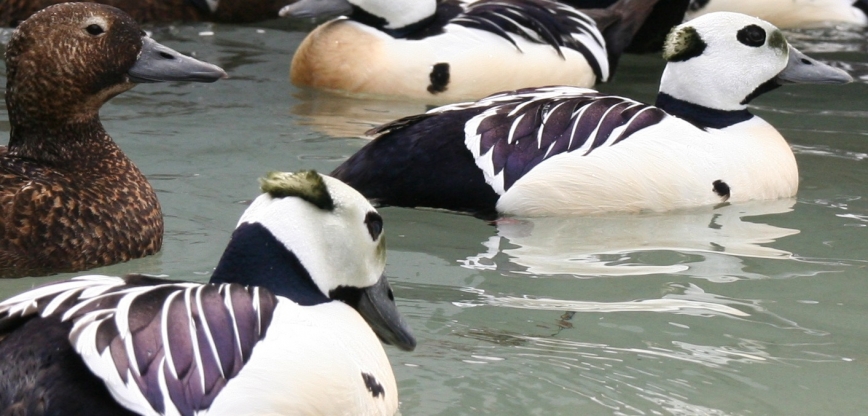
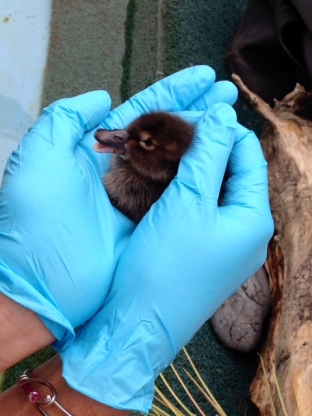
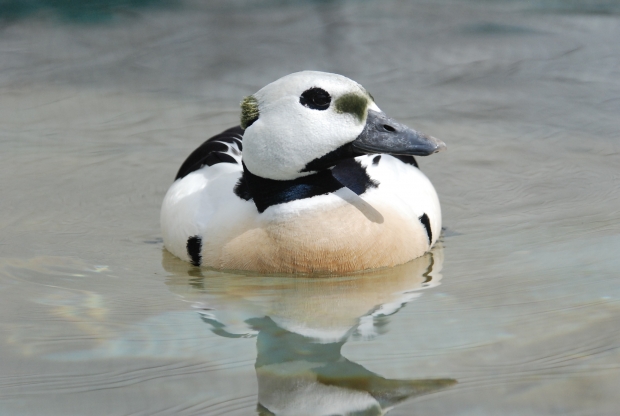
Male Steller's Eiders in Breeding Plumage
Steller's eider duckling
Steller's Eider
· Bali mynah have striking white plumage with black wing tips and bright blue coloration around the eyes. The species can approach 10 inches in height. Bali mynahs are nearly extinct in the wild because poachers collect them for the illegal pet trade, where they are valued for their striking plumage and beautiful songs. Because of this poaching, Bali mynahs are found almost exclusively in zoos. But much has been done to help the Bali mynah's wild population recover, including protection of their native breeding grounds. In 1987, 40 Bali mynahs from US zoos were sent to the Surbaja Zoo in Indonesia to form a breeding group, with resulting offspring released into the wild. In 2009, Bali mynahs raised in managed care were introduced to a neighboring island, Nusa Penida, and seem to be doing well so far.
· The largest bird in North America, the California condor once dominated the western skies, able to soar to 15,000 feet and travel up to 150 miles a day in pursuit of food. With its keen vision, the condor hunts for carcasses of dead animals, and then swoops in to feast, serving as nature’s clean-up crew. But destruction of habitat and poaching decimated the species, and by 1982, only 22 birds remained in the wild. The San Diego Zoo Global, the Los Angeles Zoo and 16 other AZA institutions took the lead at captive propagation, working with a network of government and non-profit partners. Beginning in the early 1990s, zoo-bred condors began being reintroduced into the wild. From a low of 22, there are now more than 435 condors in the world, with almost 250 free-flying in the West.
· Prior to the 1960s, there were probably around 10,000 Guam rails living on Guam, a South Pacific island. Sometime between 1944 and 1952, brown tree snakes arrived on Guam, most likely on cargo ships. The snakes’ population rapidly increased, because there was plentiful prey (such as the Guam rails) and no natural predators. The tree snakes wiped out the native animal populations, and by the 1970s, 9 of the 11 native bird species, including the Guam rail, had disappeared. Trying to save the species, the last few birds were removed from the island in the 1980s. In 1989, reintroduction of these birds began on the island of Rota, near Guam, as part of the Association of Zoos and Aquarium’s Species Survival Plan® (SSP) for the species.
· The palila Hawaiian songbird is one of the endangered Hawaiian honeycreeper species and efforts to expand the palila population back to its historic range at Pu`u Mali have included experimental releases of captive-bred birds, as well as relocation of wild birds to protected areas. The palila was the first animal to have a federal circuit court case named after it, in a precedent setting case that increased protection for endangered species. While several zoos are working to preserve the palila, they are not currently on exhibit to the public.
· Known in Hawaii as Alala, the Hawaiian crow is the most endangered corvid in the world and is the only crow species found in Hawaii. The birds are extinct in the wild, and the remaining population is managed at zoos, where the chicks are fed and cared for by animal care staff they never see to ensure they do not imprint on humans. The last `alalÄ were recorded in their natural habitat in 2002. Planning is underway to restore the `alalÄ to the Big Island of Hawaii beginning this year.
· The Waldrapp ibis, also known as the hermit ibis or the northern bald ibis, may not be viewed by some as the most attractive bird, but their strong character and bizarre appearance give them unique appeal. They look almost comical with their bald heads, long red beaks and crazy crest feathers going every which way. Their black feathers take on brilliant sheens of purple, green and orange when viewed in bright sunlight. With only about 420 wild Waldrapp ibis remaining, this is one of the world's most critically endangered avian species. But thanks to a very successful breeding and release program, there are over 1,100 Waldrapp ibis in captivity, and offspring from zoos are being released back to the wild.
For a list of AZA-accredited zoos and aquariums where you can see some of these incredible birds in person, please visit the AZA website: http://www.aza.org/SpeciesBeingSaved.
About AZA
Founded in 1924, the Association of Zoos and Aquariums is a nonprofit organization dedicated to the advancement of zoos and aquariums in the areas of conservation, animal welfare, education, science, and recreation. AZA is the accrediting body for the top zoos and aquariums in the United States and six other countries. Look for the AZA accreditation logo whenever you visit a zoo or aquarium as your assurance that you are supporting a facility dedicated to providing excellent care for animals, a great experience for you, and a better future for all living things. The AZA is a leader in saving species and your link to helping animals all over the world. To learn more, visit www.aza.org.
About the ASLC
Opened in 1998, the Alaska SeaLife Center operates as a private, non-profit research institution and public aquarium, with wildlife response and education departments. It generates and shares scientific knowledge to promote understanding and stewardship of Alaska’s marine ecosystems. The ASLC is an accredited member of the Association of Zoos and Aquariums, and the Alliance of Marine Mammal Parks and Aquariums. To learn more, visit www.alaskasealife.org.

